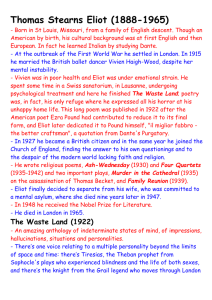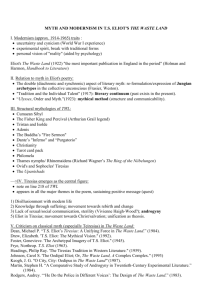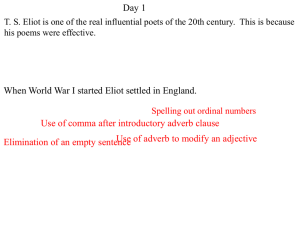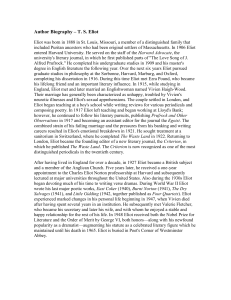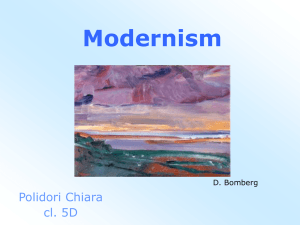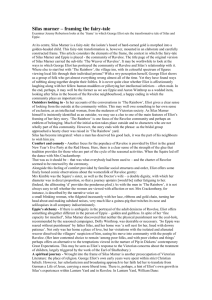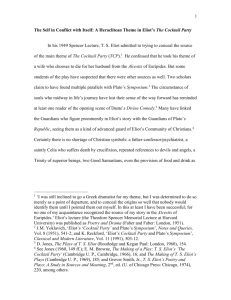T.S. Eliot, Architecture, and Historic Preservation “Here is no
advertisement
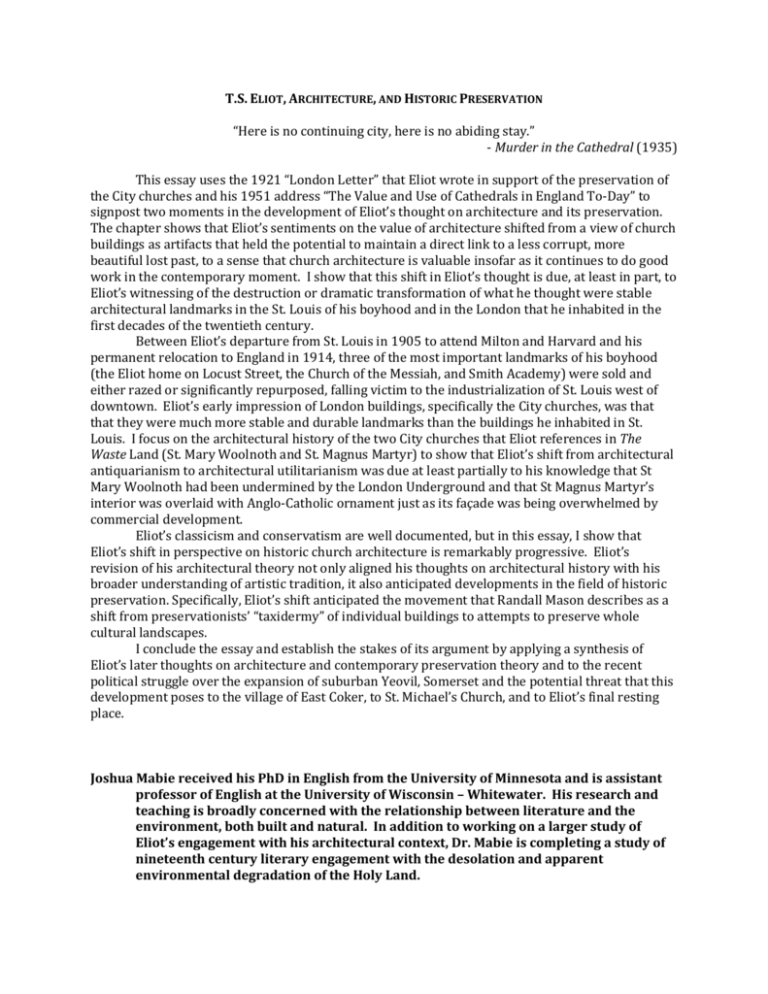
T.S. ELIOT, ARCHITECTURE, AND HISTORIC PRESERVATION “Here is no continuing city, here is no abiding stay.” - Murder in the Cathedral (1935) This essay uses the 1921 “London Letter” that Eliot wrote in support of the preservation of the City churches and his 1951 address “The Value and Use of Cathedrals in England To-Day” to signpost two moments in the development of Eliot’s thought on architecture and its preservation. The chapter shows that Eliot’s sentiments on the value of architecture shifted from a view of church buildings as artifacts that held the potential to maintain a direct link to a less corrupt, more beautiful lost past, to a sense that church architecture is valuable insofar as it continues to do good work in the contemporary moment. I show that this shift in Eliot’s thought is due, at least in part, to Eliot’s witnessing of the destruction or dramatic transformation of what he thought were stable architectural landmarks in the St. Louis of his boyhood and in the London that he inhabited in the first decades of the twentieth century. Between Eliot’s departure from St. Louis in 1905 to attend Milton and Harvard and his permanent relocation to England in 1914, three of the most important landmarks of his boyhood (the Eliot home on Locust Street, the Church of the Messiah, and Smith Academy) were sold and either razed or significantly repurposed, falling victim to the industrialization of St. Louis west of downtown. Eliot’s early impression of London buildings, specifically the City churches, was that that they were much more stable and durable landmarks than the buildings he inhabited in St. Louis. I focus on the architectural history of the two City churches that Eliot references in The Waste Land (St. Mary Woolnoth and St. Magnus Martyr) to show that Eliot’s shift from architectural antiquarianism to architectural utilitarianism was due at least partially to his knowledge that St Mary Woolnoth had been undermined by the London Underground and that St Magnus Martyr’s interior was overlaid with Anglo-Catholic ornament just as its façade was being overwhelmed by commercial development. Eliot’s classicism and conservatism are well documented, but in this essay, I show that Eliot’s shift in perspective on historic church architecture is remarkably progressive. Eliot’s revision of his architectural theory not only aligned his thoughts on architectural history with his broader understanding of artistic tradition, it also anticipated developments in the field of historic preservation. Specifically, Eliot’s shift anticipated the movement that Randall Mason describes as a shift from preservationists’ “taxidermy” of individual buildings to attempts to preserve whole cultural landscapes. I conclude the essay and establish the stakes of its argument by applying a synthesis of Eliot’s later thoughts on architecture and contemporary preservation theory and to the recent political struggle over the expansion of suburban Yeovil, Somerset and the potential threat that this development poses to the village of East Coker, to St. Michael’s Church, and to Eliot’s final resting place. Joshua Mabie received his PhD in English from the University of Minnesota and is assistant professor of English at the University of Wisconsin – Whitewater. His research and teaching is broadly concerned with the relationship between literature and the environment, both built and natural. In addition to working on a larger study of Eliot’s engagement with his architectural context, Dr. Mabie is completing a study of nineteenth century literary engagement with the desolation and apparent environmental degradation of the Holy Land.


